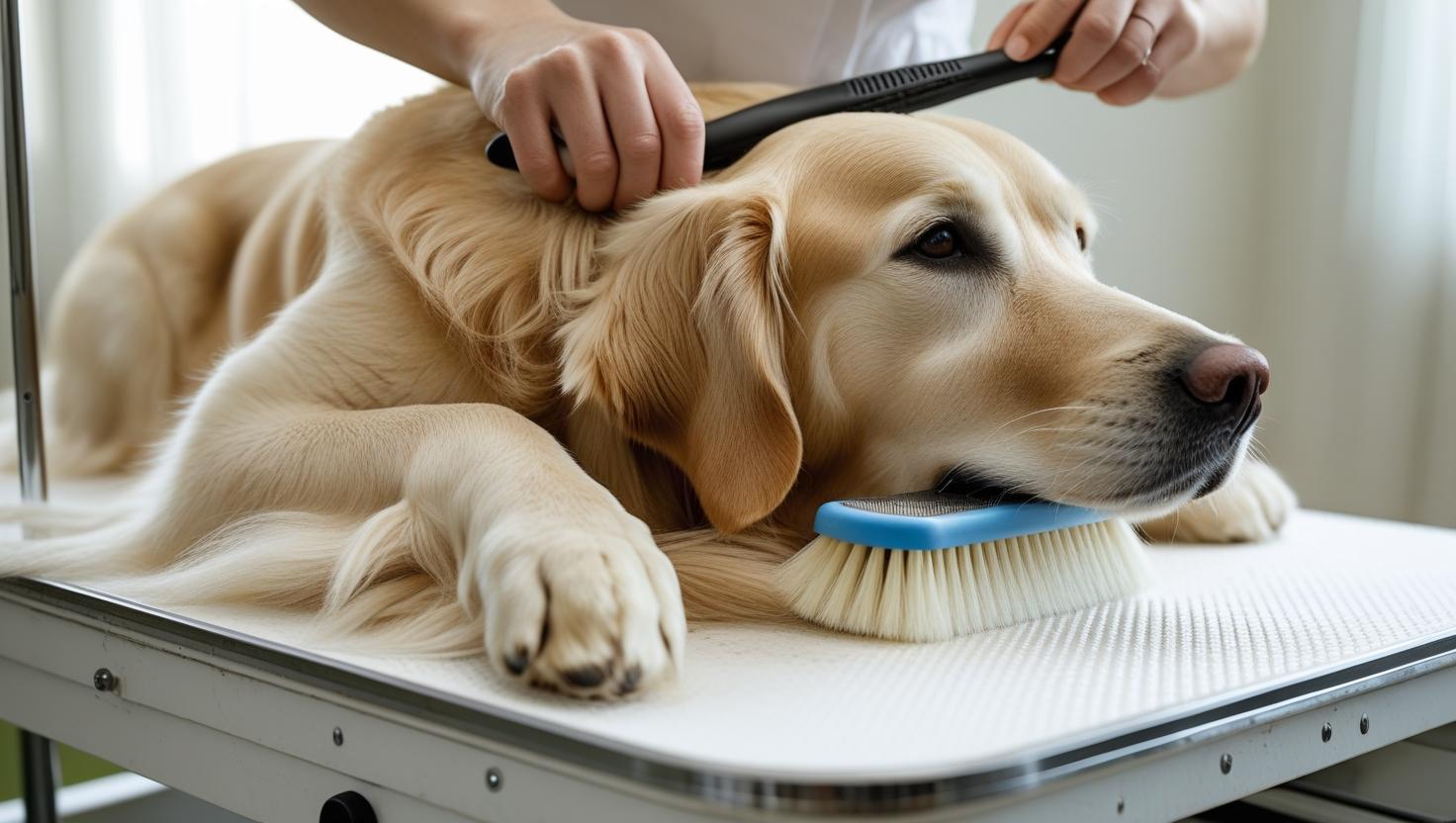Taking care of your dog is a way to show respect, provide health care, and express affection—it’s more than just making them look good. Gently brushing your furry friend helps not only their health but also builds their trust in you and makes them feel calm in their environment.
Let’s go beyond the basics and learn to create a routine that focuses on your dog’s needs. Use different tools and transform your care into an opportunity for connection and improvement in their health.
Why It’s Important to Brush Your Dog
Each time you brush your dog, it’s like giving a little health check-up. While you brush and run your hands through their fur, you may find a new bump, a knot indicating discomfort, or even signs of fleas or ticks. Brushing also acts like a massage, helping blood circulate, spreading the skin’s oils, and promoting a coat that is smooth, soft, and strong.
But the emotional impact is significant too: regular brushing helps sensitive, overly excited, or nervous dogs to calm down. It also helps puppies get used to being handled and creates positive memories around touch, which is important for vet visits or emergencies.
Choosing the Right Brush for Your Dog’s Coat
Choosing the right brush is essential. Dogs with short, sleek coats, like Dobermans or Pugs, enjoy gentle rubber grooming mitts or short-bristled brushes. These brushes remove dust and are good for the skin without causing harm. For dogs with thick fur, such as Siberian Huskies or Australian Shepherds, brushes with long pins and sturdy rakes are better. They help remove excess fur and prevent mats close to the skin.
Long-haired breeds, including Collies and Afghans, require extra attention. Metal pins or wide-toothed combs work best when used daily, starting at the ends and gradually working toward the body to detangle knots without causing discomfort.
Modern Electrical and Innovative Tools
These days, pet care has become more advanced with electric brushes and gently vibrating tools. These tools can assist dogs that dislike standing still for long periods. It’s important to introduce these devices in a calm environment and allow your dog to sniff and see them before use to minimize fear. Some of these tools are designed to be quiet or for dogs recovering from surgery. Nevertheless, traditional hand tools are still important for delicate areas and close contact with your pet.
Creating a Ritual of Trust and Cooperation
Taking care of your dog should never feel like a difficult task. Choose a calm moment, with natural light, and have treats and gentle words ready. If your dog is new to this process, start with short sessions, brushing just one section and gradually increasing as they get accustomed. Always brush in the direction of the coat and avoid pulling at tangles. Patients can help prevent fears that take time to overcome.
To unravel tough mats, use a special spray and your fingers before using a comb; save scissors for professionals or emergencies. Praise frequently, and if your dog becomes stressed, take a break and try again when they are calm.
More Than Just Fur: Body Care Essentials
Having a beautiful coat is only one part of health. Brushing your dog’s teeth, even two or three times a week, can help prevent dental problems and keep their breath fresh. Use toothpaste made for dogs and brush gently.
Nail care is also important: check them every two weeks. If you hear a loud “click-clack” when they walk, use a pet nail clipper and trim a little at a time—reward them after each paw. Cleaning their ears is important too; use a damp cotton pad (never insert deeply) and check for redness or unusual odors.
How to Care for Your Dog’s Coat
Different dogs need different levels of care:
- Short-haired dogs usually need to be brushed once or twice a week.
Dogs that shed heavily or have double coats may need to be brushed several times a week, especially during shedding seasons. Long-haired or curly-haired dogs need to be brushed daily or almost daily to avoid tangles and keep their coats looking nice.
Facing Challenges: Solutions that Respect Your Dog
If you find difficult knots in your dog’s coat, seek help from a trusted groomer—never cut the skin. If your dog’s skin is irritated, switch brushes and consult with a vet.
If your dog dislikes being brushed, take it slow: use tasty treats, speak softly, and above all, have patience. Sometimes, simply letting your dog sniff the brush on the ground is a step toward better acceptance next time.
The Importance of Caring for Your Dog with Love
Caring for your dog’s coat is not just about using the right technology or tools; it’s about the attention you give, the gentle way you touch, and how you do it with love consistently. Grooming your dog is like having a conversation with them; it shows that they are safe, valued, and well cared for every day.
With the right brush, at the right pace, and your genuine presence, grooming time becomes much more than a task—it turns into a joyful moment that expresses love.
